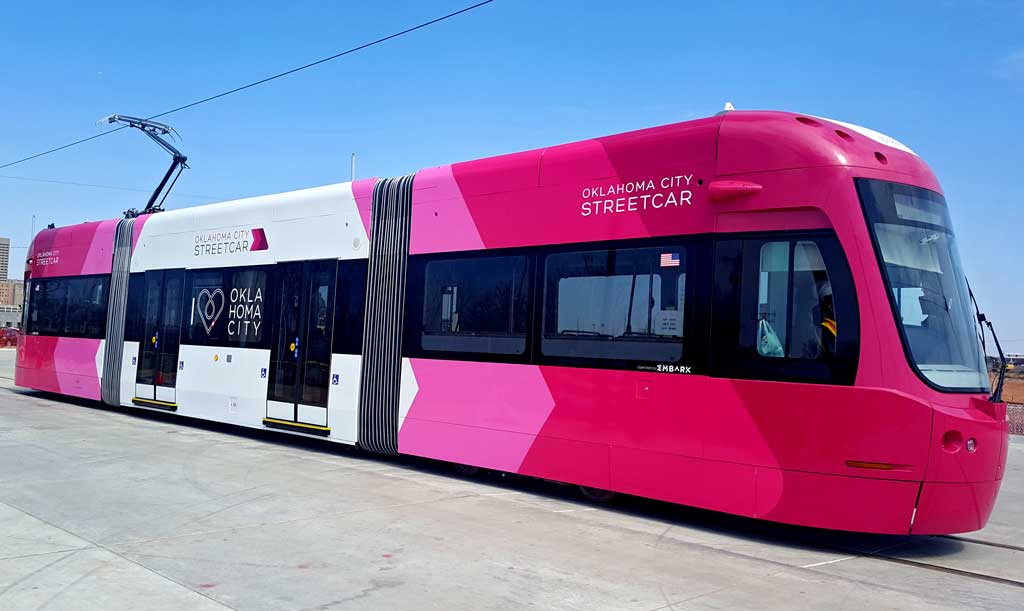Construction is wrapping up on the Oklahoma City streetcar and just beginning on another sales tax-funded project designed to make the city more appealing and user-friendly to residents and visitors.
The $131 million streetcar should launch in December, and ground was broken in June for a $288 million convention center, which MAPS 3 program manager David Todd says is the largest single contract the city has ever entered into. The convention center, paid for by the Metropolitan Area Projects Plan, is going up just south of the Chesapeake Energy Arena with a targeted opening in summer 2020.
The 4.8-mile streetcar route “is going to transform the way people get around downtown. It’s a game-changer,” says Jane Jenkins, president and CEO of Downtown OKC Partnership, a nonprofit managing the downtown Business Improvement District.
Five of the seven brightly colored electric coaches will be on the streets at any time and stop every 12 to 14 minutes at 22 platforms, says Michael Scroggins, public information officer for Embark, the city’s transportation service. He says the streetcars will build on the bus system already in place.
“With rail, the community or region has to have a robust bus network,” Scroggins says. “We created it so if you have a bus pass, you can use the streetcar at no additional cost.”
Passengers will pay with an app or at vending machines on each platform. Fares will be $1 for a single trip or $3 for a day pass. Also offered will be monthly and annual passes, with a universal fee structure for people who ride buses and streetcars.
Jenkins says she expects downtown employees to be “early adopters” of the streetcars, which will serve Midtown, Automobile Alley, the downtown business district and Bricktown.
Workers can park in the morning and go to lunch in Bricktown or Midtown without moving their cars, Jenkins says. Visitors can ride a complete loop to help them decide which restaurants and attractions to patronize, Todd says. The streetcars will travel in the same lanes of traffic used by automobiles.
“They will go the posted speed limit. They are heated and cooled, and it’s a nice smooth ride,” says Todd, adding that each car will hold 104 passengers (64 seated, 40 standing) and have space for wheelchairs and bicycles.
Testing of the system will begin in October.
The convention center will give “us about twice as much exhibit space, and all the state-of-the-art amenities the exhibitors want,” Todd says.
The building will have a 200,000-square-foot exhibit hall, 45,000 square feet of meeting space and a 30,000-square-foot ballroom.
More than 13,000 trade shows are held in the United State annually, says Mike Carrier, president of the Oklahoma City Convention and Visitors Bureau, and the convention center will attract more of that business, “especially when you add a first-class hotel like the Omni.”
The 605-room Omni will be part of the complex and add 40,000 square feet of meeting space, he says.
Carrier says the bioscience, aerospace and energy industries will find the convention center more appealing than the 50-year-old Cox Convention Center, and his staff is already working to attract groups for 2021.























